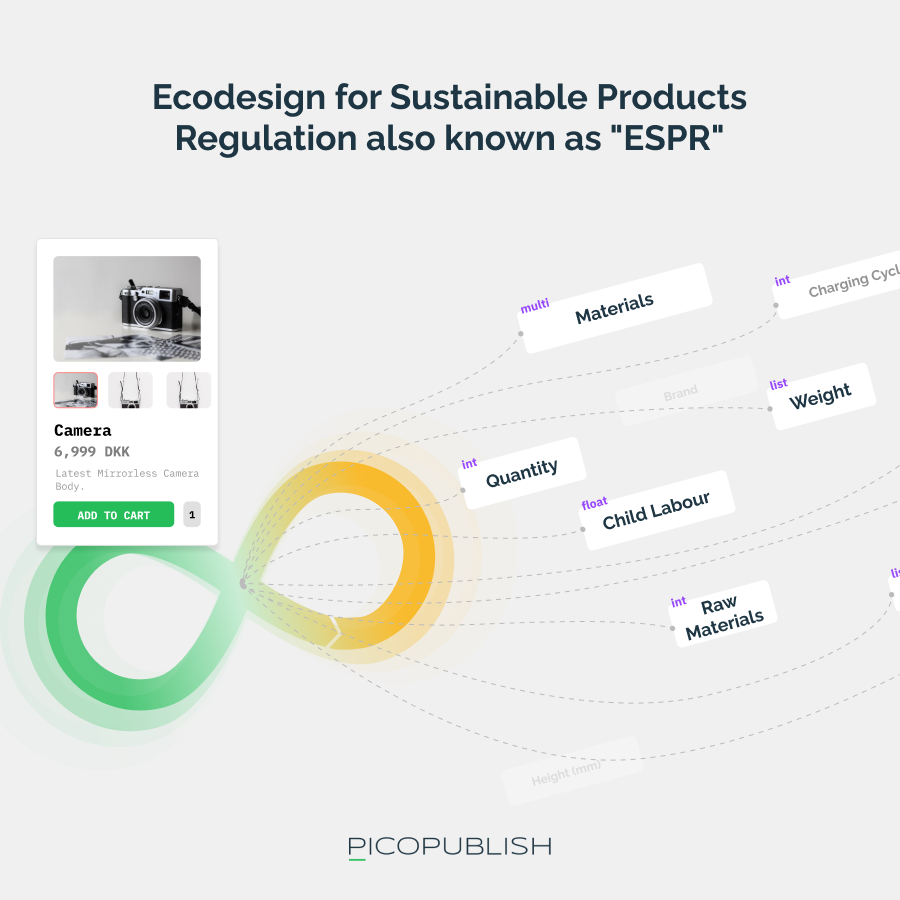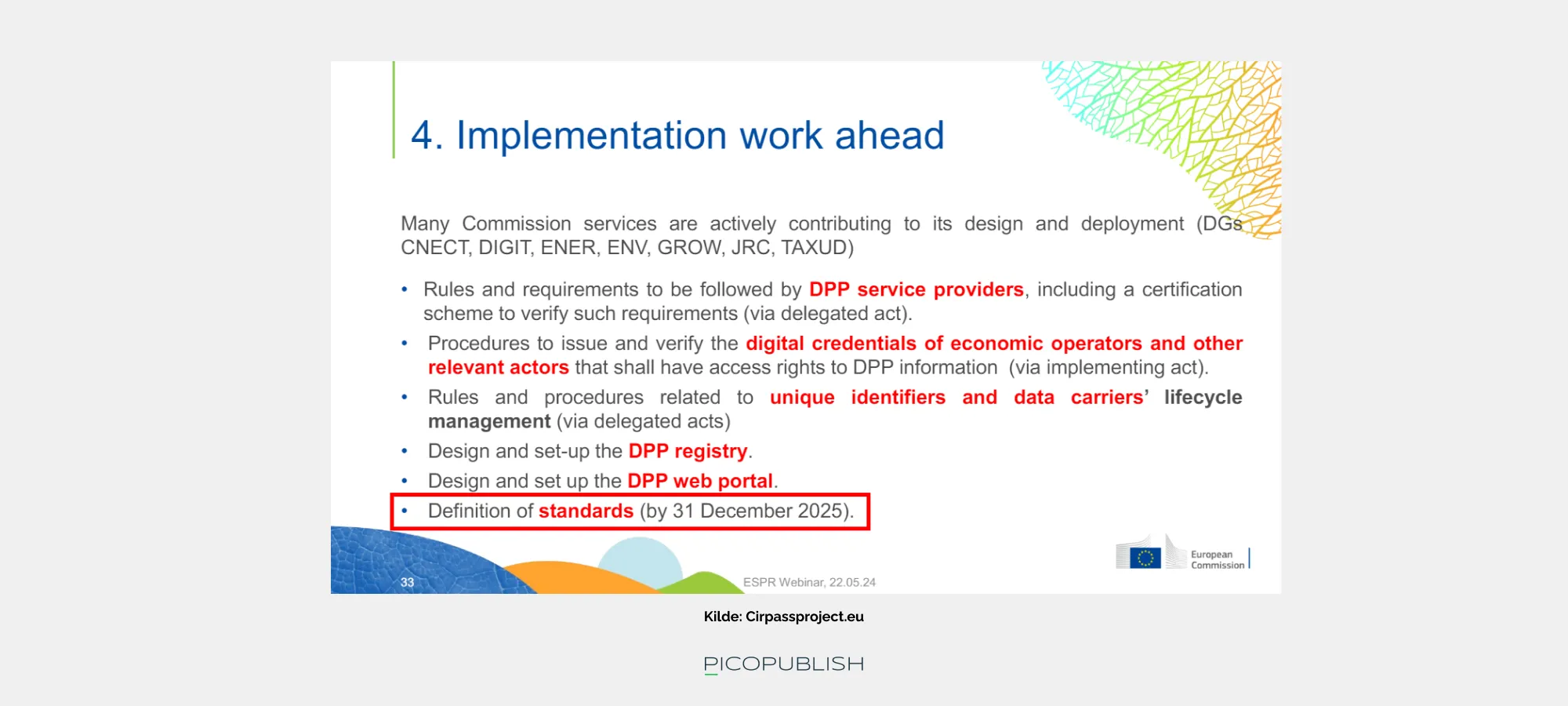The regulation "Ecodesign for Sustainable Products Regulation" (ESPR) was approved last week by EU Commission. The new regulation replaces the existing Ecodesign Directive and is launched with new, expanded requirements for product sustainability.
Recently, EU Commission approved the comprehensive regulation "ESPR" - Ecodesign for Sustainable Products Regulation.
The regulation serves as an umbrella for a number of initiatives, all aimed at ensuring that products sold in EU comply with a range of sustainability requirements. With the regulation, EU Commission places increased focus on circularity, forcing both manufacturers and retailers to address products’:
- Recyclability
- Reuse
- Resource consumption (related to production)
- Durability
- And last but not least – access to data/information about these aspects
The last point on the list is particularly interesting if you own a PIM system, as it involves a number of data points that will very likely reside there.
EU has already been working for several years on what they call a “Digital Product Passport” (DPP / a “digital product passport”). The digital product passport is intended as the key to collecting and displaying information specifically about circularity and sustainability at the individual product level.
Among others, the working group CIRPASS has collaborated with industry organizations within the textile and battery sectors to produce a series of proof of concepts illustrating how companies in these industries could handle the new data requirements posed by ESPR and DPP.

The idea of a Digital Product Passport is getting closer
The digital product passport has been mentioned in several places, and depending on the news source you have visited, you have seen various examples and descriptions of what has been expected/hoped/wished that the passport should accomplish.
When will the Digital Product Passport become a reality?
There are no concrete dates yet for when European companies must comply with the requirements of a digital product passport.
However, some trends are already beginning to paint a picture of what is relevant to focus on:
- Selected industries (textiles, batteries, chemicals) will be among the first to take the development seriously
- During the period 2023-2030, requirements and legislation will be gradually rolled out, which companies should keep an eye on (see e.g. CIRPASS2.eu)
- The technical support for a digital product passport suggests that affected companies could benefit from starting to strengthen their digital data exchange capabilities

Which data requirements does the Digital Product Passport impose?
It is far from determined which data a digital product passport must contain. The industry-specific standards will almost certainly include varied requirements.
However, we can already begin to relate to the key themes under which DPP operates when circularity is integrated into the product lifecycle. Concepts addressed here include:
- Durability: Think data about materials, certifications, and more.
- Reusability: Think data about recyclability, degradation rate, lifespan, and more.
- Upgradability & repairability: Think data about standardized measures/units, R2R (repair-to-repair guides, etc.)
- Hostile substances: Think data about chemicals, manufacturing processes, and more.
- Energy and resource efficiency: Think data about production, transport, performance, and more.
- Recycled content: Think data about sorting (e.g., Danish fraction labels), reuse, and more.
- Carbon footprint: Think logistics/value chain – related for example to CSRD reporting
"Information shall or may include..." – examples of data types from CIRPASS’s own presentation
The CIRPASS working group has already named some of the data points and types they envision companies maintaining at model/product level. These include, among others:
- Unique model/product "identifiers"
- GTIN number
- TARIC code
- Compliance documentation (declaration of conformity, technical documentation)
- "Substances of concern"
- User manuals, instructions, and safety data sheets
- "Supplier information" (e.g., country of origin)
- Supplier ID
- Facility identifiers/location indicators
- Importer data
- Sustainability labels/certifications
- Information on "performance"
- Installation, use, maintenance, repair, etc.
- "Information on how to return or dispose [the product]"
- Information for use at recycling facilities or similar
The precise data requirements are still pending and are planned to be rolled out in industry-specific formats towards 2027.

"Battery Passport Pilot" – Global Battery Alliances three proposals for a DPP concept
Some industry associations are already exploring concrete solutions to help their members handle new data requirements. Here, Global Battery Alliance’s three proposals for a DPP concept are particularly interesting.
The examples seem simple on the surface – many companies are indeed capable of onboarding and displaying data in simple web views – but they make the volume and types of data visible to an extent that makes the concept easier to relate to.
You can find all three examples here: https://www.globalbattery.org/action-platforms-menu/pilot-test/pilot-1/
When looking at the examples, the key questions for a battery company would be:
- Do I have (access to) the data being displayed?
- If not – how do I get it?
- How do I onboard this data?
- How do I display this data?
We experience that many companies hesitate to fully engage in the activity of getting suppliers to deliver data to ERP/PIM systems.
The typical explanations for why this kind of work is not initiated can be:
- Our suppliers are too immature – it’s a lost cause from the start
- The data formats we have to work with require manual workflows, which we don’t currently have enough resources to handle
- Our systems are not geared to receive data from 10-20-30 different systems
- We are unsure whether it adds value to consider automatic data onboarding



